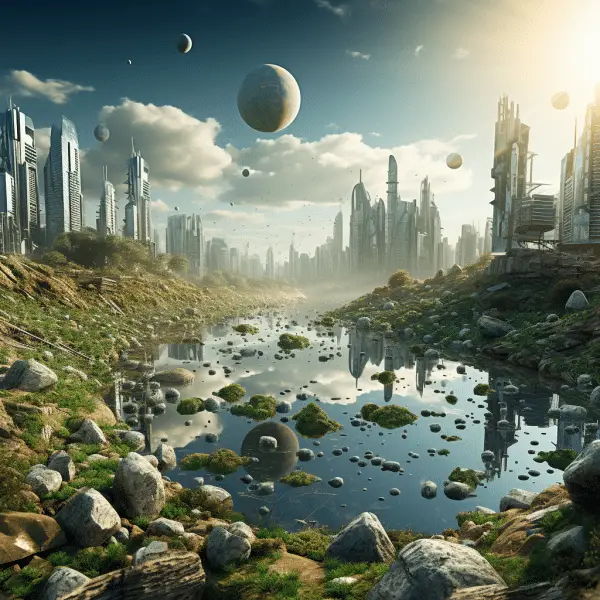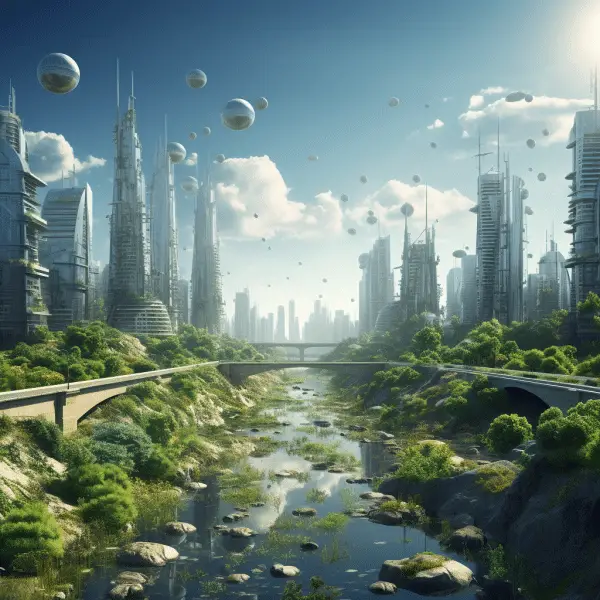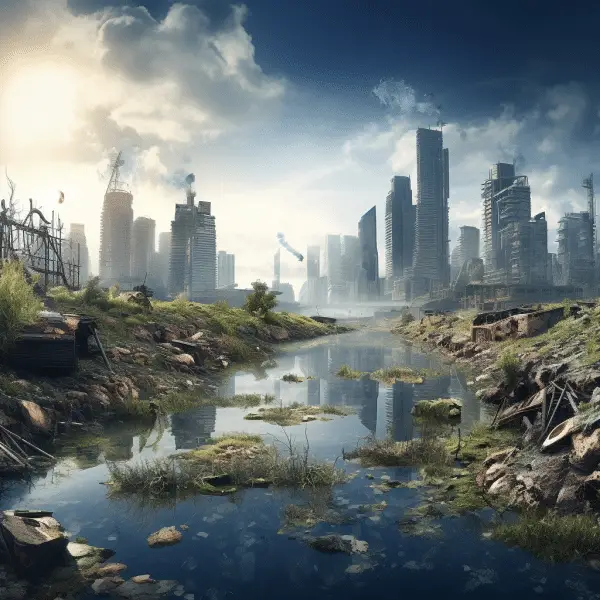A Closer Look at the Durability of Plastic Materials
Environmental impact have become an integral part of our daily lives, widely used in construction, packaging, and various other applications. One of the key reasons for their popularity is their durability. Plastic is lightweight, resistant to water and decay, making it an ideal choice for long-lasting products. However, the durability of plastic materials has both advantages and disadvantages.
While plastic construction ensures the longevity of products, it also poses challenges when it comes to disposal. Plastic waste, if not properly managed, can have detrimental effects on the environment. It can harm aquatic species, enter the human food chain, and contribute to the accumulation of waste in landfills and natural habitats. The durability of plastic materials in the environment becomes a curse, as they do not naturally decompose like organic materials.
Microorganisms, such as bacteria and fungi, play a crucial role in breaking down toxic substances in the environment. However, they have not been successful in breaking down plastic due to its chemical structure. Plastic is made up of long chains of molecular units, which contribute to its durability and resistance to decomposition in water.
While there are biodegradable plastic options available, the ideal plastic material that remains durable during usage but decomposes after disposal does not yet exist. Finding sustainable solutions to the challenges posed by plastic durability is crucial for a more environmentally friendly future.
Key Takeaways:
- Plastic materials are widely used in construction and packaging due to their durability.
- Improper disposal of plastic waste can harm the environment and wildlife.
- Microorganisms are unable to break down plastic due to its chemical structure.
- Biodegradable plastic options exist, but a fully durable and sustainable material is not yet available.
- Addressing the challenges of plastic durability is essential for a more environmentally friendly future.
The Impact of Plastic Refuse on the Environment
Plastic refuse has a significant and far-reaching impact on the environment. The durability of plastic, which makes it a desirable material for various applications, also means that it persists in the environment for centuries after disposal. Plastic waste often ends up in landfills, where it contributes to the growing problem of limited space and resource depletion. Additionally, plastic debris can find its way into natural habitats, contaminating soils, freshwater systems, and oceans, leading to severe ecological consequences.
One of the most concerning aspects of plastic refuse is its effect on wildlife. Marine animals can mistakenly ingest plastic debris, leading to internal injuries, blockages, and even death. Many species also become entangled in plastic waste, hindering their ability to move, hunt, and reproduce. This has a profound impact on aquatic ecosystems and can disrupt the delicate balance of marine life. Furthermore, the accumulation of plastic waste in bodies of water can contaminate the food chain, potentially leading to harmful effects on human health.
“Plastic refuse has become a pervasive environmental problem, infiltrating every corner of our planet. The consequences of our reliance on this durable material are dire, with devastating impacts on wildlife, ecosystems, and human health.” – Dr. Emily Green, Environmental Scientist

The Role of Plastics in Pollution
Plastic refuse is a significant contributor to pollution. Not only does plastic waste occupy precious space in landfills, but it also poses challenges in terms of disposal. While some plastics can be incinerated to generate heat, those containing substances like fluorine and chlorine require specialized procedures. Improper disposal methods and inadequate waste management systems result in plastic waste finding its way into natural habitats, including rivers, oceans, and forests.
| Type of Environmental Impact | Description |
|---|---|
| Entanglement and Ingestion | Plastic debris can entangle marine animals and birds, impairing their ability to swim, fly, or hunt. Many species also mistake plastic for food, leading to internal injuries, starvation, and death. |
| Chemical Contamination | Plastic waste can release toxic chemicals into the environment, especially when exposed to sunlight and heat. These chemicals can contaminate soils, water sources, and food chains, posing risks to both wildlife and human health. |
| Habitat Destruction | The accumulation of plastic waste in natural habitats leads to habitat degradation, impacting the biodiversity and productivity of ecosystems. As habitats become overwhelmed by plastic refuse, many species are forced to relocate or face extinction. |
To mitigate the environmental impact of plastic refuse, it is crucial to adopt sustainable waste management practices, such as reducing the use of single-use plastics, increasing recycling rates, and promoting the development of biodegradable alternatives. Additionally, raising awareness about the harmful effects of plastic waste and advocating for policy changes can help drive systemic change and foster a more environmentally conscious society.
The Benefits and Concerns Surrounding Plastics
Plastics bring numerous societal benefits and contribute to technological and medical advancements. Their lightweight nature, durability, and versatility make them ideal for a wide range of applications. From packaging and construction materials to medical devices and electronics, plastics have revolutionized various industries. They offer cost-effective solutions, making products more accessible to consumers. Additionally, plastics are crucial in reducing transportation costs due to their lightweight nature, leading to energy savings and reduced carbon emissions. Their insulation properties make them ideal for electrical applications, ensuring safety and efficiency.
However, there are also concerns about plastic usage and disposal. The accumulation of plastic waste in landfills and natural habitats poses physical risks to wildlife. Chemicals can leach out of plastic products, potentially impacting both wildlife and humans. The linear use of hydrocarbons in plastic production, especially for single-use packaging that is quickly discarded, is not sustainable. The current disposal practices of plastics contribute to pollution and environmental degradation.
“Plastics have revolutionized various industries, bringing significant benefits to society. However, it is crucial to address the concerns surrounding their usage and disposal, ensuring a sustainable future for both humans and the environment.”
To mitigate these concerns and foster a more sustainable approach to plastic usage, several solutions have been proposed. Material reduction initiatives aim to minimize the overall amount of plastic used, encouraging the adoption of alternative materials or more efficient designs. Designing products for recyclability allows for the recovery and reuse of plastic materials, reducing the need for virgin plastic production. Increasing recycling capacity and improving recycling infrastructure are essential to facilitate proper waste management. Additionally, exploring bio-based feedstocks and implementing green chemistry principles can help reduce the environmental impact of plastic production.
Collaboration for a Sustainable Future
Achieving a more sustainable approach to plastics requires collaboration between the public, industry, scientists, and policymakers. Public awareness and education campaigns can promote responsible plastic usage and waste management practices. Industries play a crucial role in adopting sustainable manufacturing processes and investing in research and development of eco-friendly alternatives. Scientists and researchers can contribute by developing innovative solutions for plastic reduction, recycling, and disposal. Policymakers have the power to enforce regulations and incentives that promote sustainable practices and hold industries accountable for their environmental impact.
By working together, we can address the concerns surrounding plastics and create a more sustainable future. Through collective action and thoughtful decision-making, we can minimize the negative impacts of plastic on the environment while still benefiting from its many advantageous properties.
| Benefits of Plastics | Concerns about Plastics |
|---|---|
| Lightweight and versatile | Accumulation of plastic waste in landfills and habitats |
| Durable and cost-effective | Potential leaching of chemicals impacting wildlife and humans |
| Insulation properties for electrical applications | Linear use of hydrocarbons and unsustainable production practices |
Plastics as Materials
Plastics are versatile materials that offer numerous benefits in various industries. They are inexpensive, lightweight, strong, and corrosion-resistant. Plastics also possess high thermal and electrical insulation properties, making them suitable for a wide range of applications. Additionally, plastics can be easily shaped and molded into different forms, allowing for intricate designs and customized products.
Additives play a crucial role in enhancing the performance of plastic materials. These additives include reinforcing materials, plasticizers, thermal and UV stabilizers, flame retardants, and colorings. They help to improve the durability, flexibility, and appearance of plastic products. However, it is important to note that some additives, such as phthalates and BPA, have raised concerns due to their potential adverse effects on animals and humans.
“Plastics are a remarkable group of materials that have revolutionized modern society. Their unique properties have contributed to significant advancements in medicine, technology, and energy conservation.”
Understanding the properties of different plastic materials is crucial in making informed decisions for product design and usage. Each type of plastic has its own set of characteristics, such as heat resistance, chemical resistance, and flexibility. By selecting the appropriate plastic material, manufacturers can ensure that their products meet the specific requirements of their intended applications.
Table: Properties of Common Plastic Materials
| Plastic Type | Key Properties | Common Applications |
|---|---|---|
| Polypropylene | Heat and chemical resistance | Food packaging, automotive components |
| Polyethylene | Flexibility, impact resistance | Garbage cans, milk jugs, plastic bags |
| PVC (Polyvinyl Chloride) | Durability, weather resistance | Pipes, window frames, vinyl flooring |
| ABS (Acrylonitrile Butadiene Styrene) | Durable, lightweight | Electronics, phone hardware, household items |
By considering the specific properties and applications of different plastic materials, manufacturers and designers can utilize plastics in a way that maximizes their benefits while minimizing any potential risks associated with additives and disposal.
Plastic Types and Common Applications
Plastic materials come in various types, each with its own unique properties and applications. Understanding the different plastic types is crucial in selecting the right material for specific projects. Here are some commonly used plastic types and their common applications:
Polypropylene
Polypropylene is a versatile plastic known for its heat and chemical resistance. It is often used in the manufacturing of food packaging, automotive parts, and medical devices. Its durability and affordability make it a popular choice in various industries.
Polyethylene
Polyethylene is a flexible and impact-resistant plastic. It can be found in products like garbage cans, milk jugs, and packaging materials. Its versatility and durability make it suitable for both consumer and industrial applications.
PVC (Polyvinyl Chloride)
PVC is a widely used plastic known for its durability and resistance to chemicals, weathering, and flame. It is commonly used in construction materials, pipes, and electrical insulation. PVC’s excellent physical properties make it suitable for both indoor and outdoor applications.
Acrylonitrile Butadiene Styrene (ABS)
ABS is a durable and lightweight plastic known for its strength and impact resistance. It is commonly found in electronics, phone hardware, automotive parts, and household items. ABS’s versatility and aesthetic appeal make it a popular choice for various consumer and industrial products.
| Plastic Type | Common Applications |
|---|---|
| Polypropylene | Food packaging, automotive parts, medical devices |
| Polyethylene | Garbage cans, milk jugs, packaging materials |
| PVC | Construction materials, pipes, electrical insulation |
| ABS | Electronics, phone hardware, automotive parts, household items |
Choosing the right plastic type depends on the specific requirements of the project, such as durability, chemical resistance, and flexibility. Working with experts in the field, like Rex Plastics, can help ensure the selection of the optimal plastic material for your needs.
Thermoplastics and Their Behavior Under Heat
Thermoplastics, such as polypropylene, polyethylene, and ABS, are widely used in various industries due to their unique properties. One key characteristic of thermoplastics is their ability to melt when exposed to high heat and then reform into different shapes. This property makes them highly versatile for manufacturing processes like injection molding. However, it also means that thermoplastics have specific heat resistance and melting points that need to be considered for different applications.
Understanding the heat resistance of thermoplastics is crucial in determining their suitability for specific uses. Each type of thermoplastic has a different melting point, which is the temperature at which it changes from a solid to a liquid state. For example, polypropylene has a melting point ranging from 130°C to 171°C, while polyethylene has a melting point between 120°C and 130°C. ABS, on the other hand, has a melting point of approximately 210°C to 235°C. These temperature ranges indicate the conditions under which these thermoplastics can be melted and reshaped.
When working with thermoplastics, it is important to consider the intended application and the heat resistance required. For instance, if a product will be exposed to high temperatures during its use, it is crucial to select a thermoplastic with a melting point above that temperature to ensure its structural integrity. On the other hand, if a product will only be subjected to low temperatures, a thermoplastic with a lower melting point may be suitable.
| Thermoplastic | Melting Point |
|---|---|
| Polypropylene | 130°C – 171°C |
| Polyethylene | 120°C – 130°C |
| ABS | 210°C – 235°C |
In summary, thermoplastics are versatile materials that can be melted and reshaped when exposed to high heat. Their melting points vary depending on the specific type of thermoplastic. Understanding the heat resistance characteristics and melting points of thermoplastics is essential for selecting the most suitable material for a given application and ensuring the quality and durability of the final product.
Choosing the Right Plastic Material for Your Project
When it comes to selecting the right plastic material for your project, there are several factors to consider. The durability, chemical resistance, flexibility, and intended application of the product all play a role in determining the most suitable material. Working with a knowledgeable plastic injection molding company can help ensure that you make the best choice for your specific needs.
Some commonly used plastic materials include polypropylene, polyethylene, and ABS. These materials offer a combination of durability and affordability, making them popular choices for a wide range of applications. Polypropylene, for example, is known for its heat and chemical resistance, making it ideal for food packaging. Polyethylene, on the other hand, is flexible and impact-resistant, making it suitable for products like garbage cans and milk jugs. ABS is a lightweight and durable plastic commonly found in electronics, phone hardware, and household items.
Table: Comparison of Plastic Materials
| Plastic Material | Durability | Chemical Resistance | Flexibility | Common Applications |
|---|---|---|---|---|
| Polypropylene | High | Excellent | Rigid | Food packaging, automotive parts |
| Polyethylene | Moderate | Good | Flexible | Garbage cans, milk jugs |
| ABS | High | Good | Rigid | Electronics, phone hardware, household items |
By discussing your project requirements and consulting with experts in the field, you can ensure that you choose the most suitable plastic material. Whether you need a material that can withstand high temperatures, resist chemicals, or provide flexibility, there is a plastic material that can meet your needs. Understanding the unique properties of different plastics is crucial in making informed decisions for product design and usage.
The Importance of Sustainable Plastic Usage and Disposal
As we continue to grapple with the environmental impacts of plastic waste, it is crucial to recognize the importance of sustainable plastic usage and disposal. The current practices surrounding plastic are not sustainable and pose significant challenges to our ecosystems. By adopting sustainable practices, we can minimize the negative impacts of plastic and work towards a more environmentally friendly future.
One of the key aspects of sustainable plastic usage is reducing our consumption. By being mindful of our plastic consumption, we can decrease the demand for new plastic products and ultimately reduce the amount of plastic waste generated. Additionally, increasing recycling rates is vital. Proper recycling ensures that plastic materials are diverted from landfills and can be reused or repurposed for new products. Investing in recycling infrastructure and educating the public about proper recycling practices are crucial steps towards effective plastic waste management.
However, sustainable plastic usage is not solely the responsibility of individuals. Industries also play a vital role in driving sustainability. By adopting more sustainable manufacturing processes, utilizing recyclable materials, and investing in research and development of eco-friendly alternatives, industries can significantly reduce their environmental impact. Collaboration between individuals, industries, scientists, and policymakers is essential in creating a circular economy for plastics, where materials are reused, recycled, and repurposed, reducing the need for new plastic production.
The Importance of Recycling
Recycling plays a pivotal role in sustainable plastic usage and disposal. It allows us to extend the life of plastic materials and significantly reduce their environmental impact. When we recycle plastic, it can be transformed into new products rather than being sent to landfills or incinerators. Recycling also conserves valuable resources, such as energy and water, which are used in the production of plastic. By closing the recycling loop, we can minimize the need for virgin plastic production and conserve resources for future generations.
| Benefits of Recycling Plastic | Challenges of Recycling Plastic |
|---|---|
| Reduces the need for new plastic production | Limited recycling infrastructure |
| Conserves energy and natural resources | Contamination of recyclable materials |
| Reduces greenhouse gas emissions | Lack of awareness and education on proper recycling practices |
| Prevents plastic waste from entering landfills and oceans | Complexity of recycling different plastic types |
In addition to recycling, exploring alternative materials and innovative solutions is crucial for sustainable plastic usage and disposal. The development of biodegradable polymers and bio-based feedstocks can provide more environmentally friendly options. Green chemistry principles, which focus on the design and production of chemical products that are safer for human health and the environment, can also play a significant role in reducing the environmental impact of plastic. Embracing these alternatives and implementing them on a larger scale can help us move towards a more sustainable future.
Challenges and Opportunities for the Future
The future of plastics presents both challenges and opportunities for the industry. As we strive for a more sustainable and environmentally friendly world, the plastic industry must confront the challenges it faces and seize the opportunities for innovation and improvement. In this section, we will explore some of the key challenges and opportunities that lie ahead.
One of the major challenges is reducing the reliance on traditional plastic materials that do not degrade in the environment. The durability of plastic, while beneficial during usage, becomes problematic when it comes to disposal. Finding alternative materials that can provide the necessary durability during use but decompose more easily after disposal is a significant task that researchers and manufacturers are tackling.
Another challenge is improving the recycling infrastructure and increasing recycling rates. Currently, a significant amount of plastic waste ends up in landfills or, even worse, in natural habitats. To reduce the environmental impact, it is crucial to enhance recycling processes and educate individuals and industries on the importance of proper recycling practices.
Opportunities for innovation
The challenges that the plastic industry faces present opportunities for innovation and advancement. Researchers and scientists are exploring new materials and technologies that can offer sustainable alternatives to traditional plastics. Biodegradable polymers, bio-based feedstocks, and advanced recycling methods are some of the exciting areas of innovation that show promise for the future.
As industry experts, we have a responsibility to drive change and embrace these opportunities. By collaborating with scientists, policymakers, and other stakeholders, we can work towards a more sustainable plastic future.
Ultimately, the future of plastics rests on our ability to address the challenges in the industry and seize the opportunities for innovation. With a concerted effort from all stakeholders, we can create a more sustainable and environmentally friendly plastic industry that meets the needs of today without compromising the needs of future generations.
The Role of Individuals and Industries in Plastic Sustainability
Plastic sustainability is a shared responsibility that requires both individuals and industries to take action. As individuals, we can make a difference by reducing our consumption of plastic products and opting for more sustainable alternatives. By using reusable bags, bottles, and utensils, we can significantly reduce the amount of plastic waste generated. Additionally, properly segregating and recycling plastic materials can help minimize their impact on the environment.
However, the responsibility does not rest solely on individuals. Industries also play a crucial role in driving plastic sustainability. Manufacturers can adopt sustainable manufacturing processes and use recyclable materials in their production. Investing in research and development of eco-friendly alternatives to traditional plastics is another way for industries to contribute to the reduction of plastic waste.
Collaboration is key in achieving sustainable plastic usage and disposal. By working together, individuals, communities, and industries can create a circular economy for plastics, where materials are reused, recycled, and repurposed instead of ending up in landfills or polluting the oceans. By taking shared responsibility, we can protect our environment and ensure a more sustainable future for generations to come.

Conclusion
In summary, the durability of plastic materials has both advantages and drawbacks. While plastic offers lightweight, strong, and corrosion-resistant properties, its long-lasting nature poses significant environmental challenges. Improper disposal of plastic waste leads to harmful impacts on aquatic species and potential contamination of the human food chain.
Although efforts to break down plastic by microorganisms have been unsuccessful due to its chemical structure, biodegradable plastic options are available. However, the ideal plastic material that remains durable during usage but decomposes after disposal is yet to be developed.
To mitigate the environmental impact of plastic, it is crucial to restrict consumption, increase recycling rates, and adopt sustainable manufacturing practices. Collaboration among individuals, industries, scientists, and policymakers is essential in creating a more sustainable plastic future. By reducing plastic consumption and adopting eco-friendly alternatives, we can work towards a circular economy for plastics and ensure a healthier planet for future generations.
FAQ
What are the environmental impacts of plastic refuse?
Plastic refuse can harm aquatic species, contaminate soils and freshwater habitats, and potentially enter the human food chain.
How can the environmental impact of plastic be reduced?
The most effective way to reduce the environmental impact of plastic is to restrict consumption and increase recycling rates to prevent plastic from entering the environment.
What are the benefits and concerns surrounding the usage and disposal of plastics?
Plastics offer numerous societal benefits but also pose concerns such as accumulation in landfills, physical risks to wildlife, and the leaching of chemicals that can impact wildlife and humans.
What are some common plastic materials and their properties?
Common plastic materials include polypropylene, polyethylene, PVC, and ABS. Each material has unique properties such as heat resistance, flexibility, and impact resistance.
How do thermoplastics behave under heat?
Thermoplastics melt when exposed to high heat and can be formed into products. However, they can also melt and deform at elevated temperatures.
How do I choose the right plastic material for a project?
Factors to consider when choosing a plastic material include durability, chemical resistance, flexibility, and the intended application. Consulting with experts can help in selecting the optimal material.
What are some challenges and opportunities for the future of plastics?
The future of plastics lies in addressing challenges such as material reduction, recyclability, and the development of biodegradable polymers. Opportunities include increasing recycling rates and exploring new sources of bio-based feedstocks.
What is the role of individuals and industries in plastic sustainability?
Individuals can contribute by reducing consumption, recycling diligently, and advocating for sustainable practices. Industries play a crucial role in adopting sustainable manufacturing processes and investing in research for eco-friendly alternatives.
What is the importance of sustainable plastic usage and disposal?
Sustainable plastic usage and disposal are important for minimizing the environmental impact of plastic, preserving finite resources, and creating a circular economy for plastics.
What is the conclusion regarding plastic durability?
Plastic durability is a double-edged sword. While it brings numerous benefits, its improper disposal and accumulation in the environment pose significant environmental challenges. Sustainable practices and collaborative efforts are necessary for a more sustainable plastic future.








